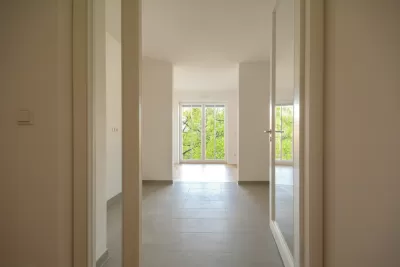Rent control is gaining popularity in cities and states around the country. Some economists urge caution when considering this form of tenant protection.

Jenny Schuetz follows up on the news of the nation's first statewide rent control law, approved recently in Oregon.
The economic rationale is to lessen financial strain on renters, given that housing costs have risen faster than incomes. In many large cities along East and West Coasts, even middle-income families are stretching to pay for good quality housing in desirable neighborhoods. The political motivation behind Oregon’s new law is also clear: Unhappy rentershave emerged as a more vocal constituency across the country, and policymakers in both parties, from Boston to Minneapolis to San Diego, are taking notice.
According to Schuetz, however, rent control is ineffective in addressing the two crises of housing affordability in Oregon and the rest of the country.
The first affordability problem is that the nation’s poorest 20 percent have too little income to afford minimum quality housing without receiving subsidies. That’s not a failure of housing markets, but a function of the low wages and unstable incomes generated by labor markets. Poor families could be helped by expanding existing programs such as housing vouchers or the Earned Income Tax Credit (EITC) to cover more poor households. But to fund those programs, middle- and higher-income households would have to pay more in taxes—which state and federal lawmakers have been reluctant to propose.
The second, more challenging affordability problem is that over the past 40 years, the U.S. hasn’t built enough housing in the locations where people most want to live. Metropolitan areas with strong labor markets and high levels of amenities—including Portland, Ore., Seattle, Wash., most of coastal California, and the Northeast corridor from Washington, D.C. to Boston, Mass.—have underbuilt housing relative to demand. The same pattern is true for neighborhoods within cities. Affluent residential areas with good public schools, access to jobs and transportation, have effectively shut down new development of anything other than expensive single family homes on large lots.
Instead of rent control, Schuetz says only new housing supply—especially "less expensive housing in cities and neighborhoods where demand is high"—enabled by sweeping changes to land use regulation can solve these crises.
Schuetz also explains where the risk in rent control comes from—that landlords respond to the cap in rent increases with more harm than good.
FULL STORY: Oregon’s new rent control law is only a band-aid on the state’s housing woes

Alabama: Trump Terminates Settlements for Black Communities Harmed By Raw Sewage
Trump deemed the landmark civil rights agreement “illegal DEI and environmental justice policy.”

Study: Maui’s Plan to Convert Vacation Rentals to Long-Term Housing Could Cause Nearly $1 Billion Economic Loss
The plan would reduce visitor accommodation by 25% resulting in 1,900 jobs lost.

Why Should We Subsidize Public Transportation?
Many public transit agencies face financial stress due to rising costs, declining fare revenue, and declining subsidies. Transit advocates must provide a strong business case for increasing public transit funding.

Wind Energy on the Rise Despite Federal Policy Reversal
The Trump administration is revoking federal support for renewable energy, but demand for new projects continues unabated.

Passengers Flock to Caltrain After Electrification
The new electric trains are running faster and more reliably, leading to strong ridership growth on the Bay Area rail system.

Texas Churches Rally Behind ‘Yes in God’s Back Yard’ Legislation
Religious leaders want the state to reduce zoning regulations to streamline leasing church-owned land to housing developers.
Urban Design for Planners 1: Software Tools
This six-course series explores essential urban design concepts using open source software and equips planners with the tools they need to participate fully in the urban design process.
Planning for Universal Design
Learn the tools for implementing Universal Design in planning regulations.
Caltrans
Smith Gee Studio
Institute for Housing and Urban Development Studies (IHS)
City of Grandview
Harvard GSD Executive Education
Toledo-Lucas County Plan Commissions
Salt Lake City
NYU Wagner Graduate School of Public Service





























